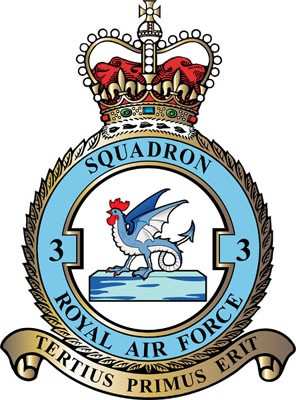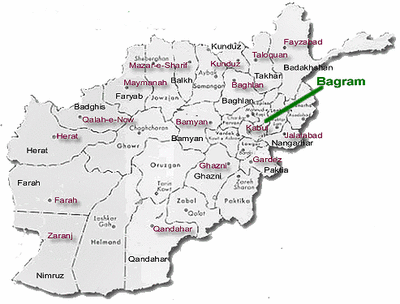Brits Lose One Harrier Destroyed, One Damaged
By Aero-News Senior Correspondent Kevin R.C. "Hognose"
O'Brien
Friday morning at 0400 local, the medieval Taliban, using that
most medieval weapon -- an unguided rocket -- destroyed one Harrier
GR.7A jet and damaged another as they sat on the ground at Kandahar
Air Field. No personnel were hurt.

Until now, aircraft losses in the GWOT have been mostly
restricted to drones, helicopters and special ops aircraft. The
fixed wing aircraft lost have been predominantly lost to CFIT,
mechanical failure, or other accidents. Although the RAF lost a
Tornado to US friendly fire in Iraq in 2003, and a special-ops
Hercules to the enemy there, no fixed-wing aircraft has previously
been destroyed by enemy action in Afghanistan.

Even helicopter crews have found the Afghan terrain and climate
to be deadlier enemies than the actual enemy.
The RAF detachment commander said, "This was an indiscriminate
attack and we are fortunate that none of our people has been hurt.
This will have no impact on our operational capability." The UK MOD
statement did not identify this individual, but British sources
have previously said that the commander is Wing Commander "Arnie"
Palmer, normally the Officer Commanding the Operations Wing at RAF
Cottesmore.
The original British MOD statement did not mention the
destruction of the airplane, and opposition politicians in Britain
have been critical of that; but the operational impact of the
attack does seem slight (the destroyed plane has already been
replaced).

Guerillas, insurgents and terrorists have found the unguided
rocket a cruel, indiscriminate and very occasionally lucky weapon.
It is typically the kind fired from "Katyusha" type multiple rocket
launchers, or from helicopter-mounted pods. These rockets were
scattered in great profusion in caches all over Afghanistan, often
under the control of local militia commanders or sub-warlords, and
while Coalition forces have captured and destroyed tens of
thousands of them, numbers remain, and hostile forces regularly try
to smuggle more in.
Taking the rocket from its multiple launcher or firing
container, they prop it up with rocks or sticks, aimed in the
general direction of the target (preferably something really big,
as accuracy is wanting in this system). The enemy bands usually set
up several rockets at once. They use a slow-burning time fuze to
set the rockets off so that they can be long gone when the launch
draws Allied attention. The fuze burns to the end, and the rocket
wobbles into the air, flying more or less ballistically to land...
somewhere in the general direction it was aimed.
This technique was used by the Viet Cong and was presented in a
guerilla-warfare text attributed to the unsuccessful Communist
guerilla Che Guevara. Afghans used it against the Russians
(photo) and in the last couple of years, the Taliban and Hezb-i
Islami Gulbuddin fighters have actually tried paying Afghan
children to set these random rocket attacks up.

Even if an agent has to be paid to do the dirty work and most of
the rockets are never fired, and most of the ones that are fired
never hit anything but dirt, the economics of the exchange are
attratictive for the low-tech side. The going price for a leftover
1980s rocket is about 150 Afghanis, or $3 (new ones smuggled from
China are worth more). The Harriers cost 20 million pounds apiece,
or
As noted above, occasionally they get lucky. Friday
morning's attack was one of those occasions. No one was hurt by the
attack, except for those Britons who pay taxes.
The British RAF contingent from No 3 (Fighter) Squadron is
keeping a stiff upper lip. One jet is repairable, and repairs have
already begun; for the other, a replacement has already
self-deployed from No. 3's home station, RAF Cottesmore.
In Afghanistan, the six-plane detachment from No. 3 Squadron
mostly flies armed reconnaissance missions and reacts to Coalition
special operations forces in contact. The Harriers can cover the
large distances faster than helicopters, and talk directly to
tactical air control party personnel or combat controllers on the
ground, which ensures accurate placement of munitions.

No. 3 Squadron is quite venerable, having received its first
heavier-than-air flying machines as "No. 3 Squadron, Royal Flying
Corps," when the Flying Corps was formed in 1912. It was the first
British squadron to get airplanes, hence its motto, "Tertius primus
erit," which is Latin for "Third shall be First." Over the years it
has operated many of the most significant RAF fighters. Next year,
it will be the first again -- first squadron to reform as a
Eurofighter Typhoon Squadron. It will be operational with the new
jet in 2007.
 Sierra Space Repositions Dream Chaser for First Mission
Sierra Space Repositions Dream Chaser for First Mission ANN's Daily Aero-Term (05.10.24): Takeoff Roll
ANN's Daily Aero-Term (05.10.24): Takeoff Roll Aero-News: Quote of the Day (05.10.24)
Aero-News: Quote of the Day (05.10.24) Aero-News: Quote of the Day (05.11.24)
Aero-News: Quote of the Day (05.11.24) ANN's Daily Aero-Term (05.11.24): IDENT Feature
ANN's Daily Aero-Term (05.11.24): IDENT Feature







